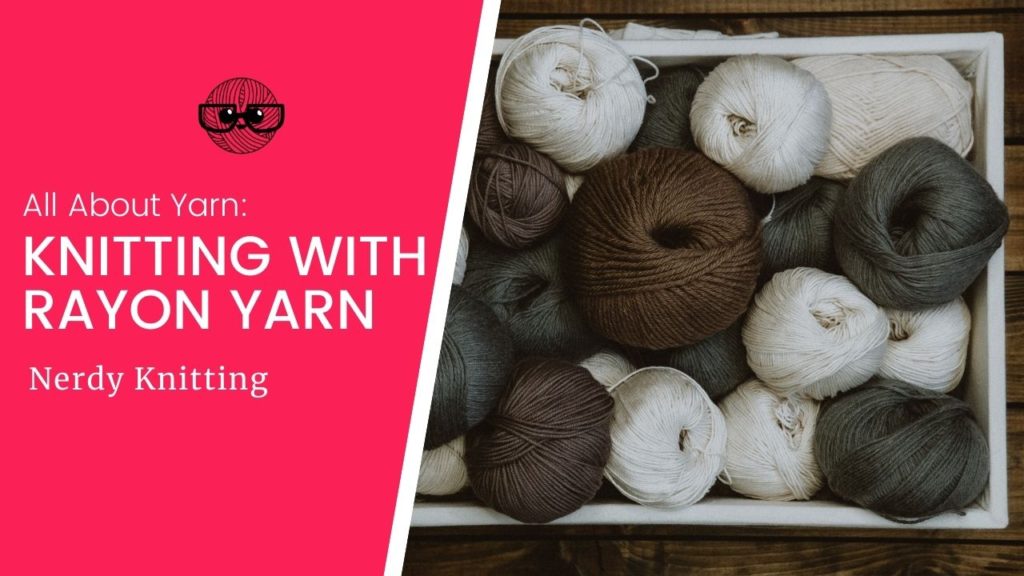The manufacturing of rayon for fabrics (especially yarn) has changed a great deal since its initial creation in the late 19th century. Now, biosynthetic yarns are a great choice for knitting and have many advantages. We’ll take a look at rayon and some of its other names – modal, tencel, and viscose – and when you might want to give knitting with rayon a try.
We’ll look at:
- How Rayon & Biosynthetic Yarns are Made
- What is Rayon?
- Properties of Rayon, Modal, Tencel & Viscose Yarns
- Knitting with Rayon Yarns
- Caring for Finished Projects
- Buying Rayon, Modal, Tencel & Viscose Yarns
Let’s take a closer look at each of these areas. Then you’ll know exactly when to choose a rayon yarn for your next knitting project.
Some links below are affiliate links. If you click through and make a purchase I may receive a small commission at no extra cost to you. See the disclosure policy for more information.
How Rayon & Biosynthetic Yarns are Made
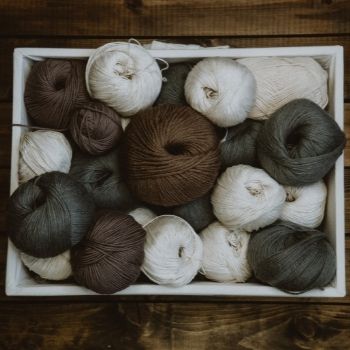
Knitting fibers can be divided into four basic categories – animal fibers (like wool, silk, and alpaca), plant fibers (like cotton and linen), biosynthetic fibers (like rayon and bamboo), and synthetic fibers (like acrylic and nylon). Rayon, modal, tencel, and viscose all fit within the biosynthetic fiber category because they come from natural, plant fiber sources but they all require heavy processing to turn the cellulose material into fibers that can be spun into yarn.
Rayon (and modal, tencel, and viscose) falls within the regenerated, biosynthetic category between plant fibers and synthetic fibers because it is a plant fiber like cotton or linen, but unlike those fibers, it isn’t easily processed. Instead, it’s necessary to treat it like a synthetic fiber and use a specific process to break the plant matter down (either using heat, chemicals, or both) then form the processed matter into large sheets that are dried. Then the sheets are re-dissolved and pushed through specialized extruders that create the fibers that can then be spun into usable yarn.
That is just a broad overview of the process, but what’s interesting is that any stage of this process can be changed to produce a fiber with different characteristics. Even after the filaments are created, various yarns can be made by cutting the filaments to different staple lengths (to simulate natural fibers) and spinning them in a variety of different ways.
But, while it may take heavier processing methods to create spinnable fibers, rayon uses natural materials. Since it’s a naturally occurring resource, it’s biodegradable (even more so than cotton). And newer forms of rayon (modal and lyocell) use more sustainable manufacturing processes. This makes it a good choice for those who are concerned about the environmental impact made by their choices and purchases.
What is Rayon?
Rayon is the oldest biosynthetic fiber, originally developed in 1885 but didn’t reach mainstream use until 1910. It was developed as a less-expensive alternative to silk and, as described in the previous section, it’s derived from natural resources but goes through a chemical process to become a useable fiber. In the case of rayon, the cellulose material comes from wood chips and cotton lint.
After the initial creation of rayon, the process has been used to develop even more forms of rayon using different plant sources. And, while these early versions of rayon used a chemical process, there are more sustainable alternatives today.
Here are some of the names you’ll often find on yarn labels (besides just ‘rayon’) – all of these are forms of rayon, that use the same basic manufacturing process (and have improved on the process, making it more environmentally sustainable) but use different plant source materials.

Viscose Rayon
Viscose rayon is one of the earlier forms of rayon that is still in use. The terms (rayon, viscose, and viscose rayon) are often used interchangeably so if you see rayon listed on a yarn label today, it is most likely viscose rayon. It is derived from the wood pulp of any of the following sources – beech, pine, spruce, hemlock, eucalyptus, bamboo, soy, or sugarcane and uses the same basic chemical extraction process explained above.
Tencel (Lyocell) Rayon
Tencel is the brand name for lyocell (another, more modern type of rayon). It’s made from a variety of wood fibers like rayon but uses a more eco-friendly manufacturing process. The wood that is used to create lyocell/tencel is harvested sustainably and the chemicals used for processing the cellulose fibers are recycled and used to process the next batch of cellulose fibers. This form of rayon is also ten times more absorbent than cotton and also keeps its strength when it’s wet.
Modal Rayon
Modal rayon is also a newer, more sustainable version of rayon. It uses cellulose fibers that are obtained from beech trees. The fibers are stretched after spinning finer and lighter than other forms of rayon. And, like lyocell, it uses an improved form of processing to minimize the environmental impact of the manufacturing process. The chemicals used in the processing of the fibers are recycled and re-used for the same process.
Sources: What is Viscose? – The Principles of Knitting – Tencel.com
Properties of Rayon, Modal, Tencel & Viscose Yarns
The various types of rayon yarns share many of the same advantages and disadvantages. But, while I can include general advantages and disadvantages here, some of these characteristics can be affected or changed depending on how the fibers are manufactured. For example, some rayon yarns may feel soft and smooth with a silk-like sheen. Others may feel strong and durable with a cotton-like texture. Both are still rayon yarns, but the way the fibers have been processed and spun are different – which affects the final yarn.
I’ll include all of the advantages and disadvantages of these yarns below, but just be aware that each of these characteristics are affected by the manufacturing process and will vary from one yarn line to another, depending on what specific characteristics were desired. These are just generalities because any of these characteristics depend on how the fibers are processed and spun.
Advantages of Rayon Yarns
Rayon yarns have some great advantages that make them a great option for knitting. Because the initial goal was to find a less-expensive alternative to silk, one of the major characteristics of these types of yarns is their silk-like qualities. Other advantages include:
- smooth
- silk-like sheen
- fluid drape
- lightweight
- breathable
- takes dye well
- easy care
Disadvantages of Rayon Yarns
While there are many reasons to choose a rayon yarn for your projects, you should be aware of some of the drawbacks. These include:
- can be slippery to knit with
- little to no resilience
- prone to stretching
- delicate when wet
- susceptible to mildew
Now that you understand some of the advantages and disadvantages to choosing rayon yarns, let’s look at what it’s like to knit with them and what types of projects these yarns are good for.
Get the Yarn Substitution Checklist
Fill in the form below to get a free copy of the Four Step Checklist for substituting yarn. Use it for your next knitting project!
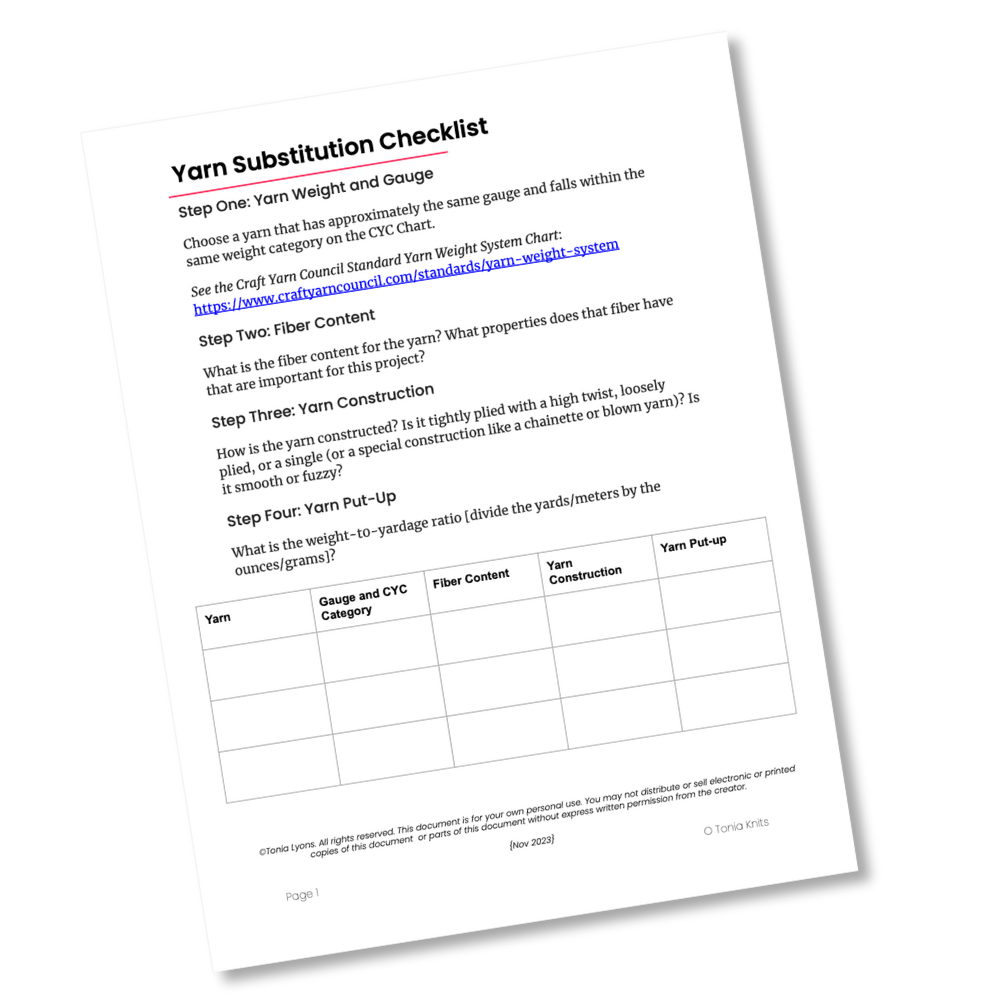
Knitting with Rayon Yarns
For the most part, rayon yarns feel very nice in the hands while knitting. Of course, as discussed in the section about yarn properties, this is entirely dependent on the manufacturing process – because rayons are so versatile and can be made to feel as smooth as silk or more like sturdy cotton. But there are some things to note for any yarns that fall within this category.
If the yarn is slippery, metal needles might not be a good choice – especially if you notice that it’s hard to keep your stitches from slipping around too much or if your fabric tension is uneven. A better choice might be bamboo, wood, or plastic needles that can provide a bit of friction and ‘grip’ for the stitches.
Rayon yarns generally have little resilience or memory and can be prone to stretching. So it’s a good idea to knit them a little more firmly (like you would for a superwash wool) to help the garment hold its shape. Avoid heavily textured fabrics or even anything with a lot of ribbing. Because rayons are prone to stretch and have little resilience they won’t hold their shape very well and will cause heavily textured garments to droop and ribbing won’t hold its shape.
This lack of resilience can also make it harder on the hands. Wool is lovely to knit with because the natural elasticity has some ‘give’ that makes it easy on the hands. If you’ve ever knit with wool and then knit with cotton, you probably felt an immediate difference in the elasticity (since cotton has very little elasticity too). That lack of elasticity makes it harder on your hands while you’re knitting.
Choosing Knitting Patterns for Rayon Yarns
Rayon is often blended with plant fibers to make them a little more lightweight. This makes it a great choice for summer knits – with the breathability, beautiful drape, and lightweight feel of plant fibers and rayon, they are great knit into tanks and tees for hot weather.
Their characteristics also make them a great choice for light summer shawls – especially a yarn with a good drape and silky feel.
Rayon-cotton blends are also great for kids clothing because they are generally soft and easy to care for.
Avoid tightly textured garments or all-over rib patterns – these just aren’t good choices (unless the rayon is blended with wool which will provide the needed memory and resilience).
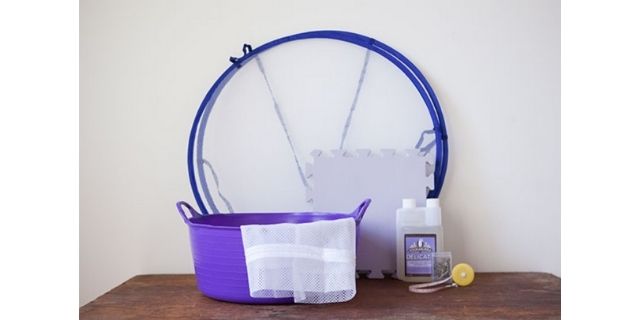
Caring for Finished Projects
All forms of rayon are generally easy to care for (but always check the yarn labels just in case). They are usually machine washable (and, depending on what it’s blended with, maybe machine dry-able).
This makes them a great choice for summer garments and kids things – those things that are probably going to be washed more often.
Simply wash in your washing machine (the gentle cycle is still a good idea for hand-knit garments) and lay flat to dry or, if the blend allows, machine dry (tumble dry on low heat) when needed. As with any yarns, be sure to check the yarn label for care recommendations.
Blocking Rayon Knits
Projects knit in rayon or rayon blends don’t usually need any special blocking techniques. (In its simplest form, blocking is just caring for your hand knit garments.) If washing and drying or following the care instructions for the yarn doesn’t produce the result you want or if the project has some lace that you’d like to open as much as possible, steaming is a good choice (unless the yarn blend contains acrylic or nylon, which should not be steamed. Wet block instead).
To steam block rayon: Pin the garment to its final shape and finished measurements on a blocking mat, being careful to stretch any lace or other openwork designs to showcase them. Use a handheld steamer or iron to apply steam to the garment, holding the steamer or iron above the garment (and not pressing the appliance directly to the garment).
Buying Rayon, Modal, Tencel & Viscose Yarns
While you can find 100% rayon yarns, they are most often blended with other fibers, especially cotton or linen (to make them more lightweight and less expensive). Rayon is also often used for novelty yarns because of how the fibers can be changed and manipulated during the processing and spinning, making it easy to create a variety of textural and interesting yarns.
Rayon & Cotton/Linen Blend Yarns
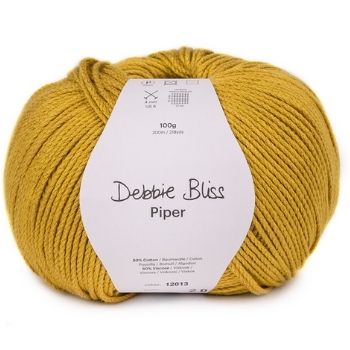
Rayon is commonly blended with plant fibers like cotton and linen. Here are few yarn blends to try:
- Knit Picks Shine Sport(Pima Cotton & Modal)
- Knit Picks Shine Worsted (Pima Cotton & Modal)
- Stylecraft Linen Drape (Viscose & Linen)
- Lana Grossa Solo Lino (Viscose & Linen)
- Debbie Bliss Piper (Cotton & Viscose)
Rayon & Wool Blend Yarns
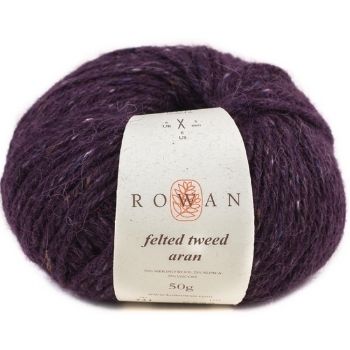
Here are a few blends that include rayon and wool (or other animal fibers):
- Cascade Yarns Luminosa (Viscose, Alpaca & Wool)
- Rowan Felted Tweed Aran (Wool, Alpaca & Viscose)
- Bremont Tamara (Llama & Lyocell)
- Novita WoollyWood (Modal & Merino Wool)
- Katia Air Lux (Viscose & Wool)
Rayon Novelty Yarns
Rayon is commonly used in novelty yarns because they are easy to manufacture (with just a need to change some of the steps in the manufacturing process to change the yarn characteristics). Here are some novelty yarns that include rayon:
More Questions about Rayon
While we’ve discussed everything you need to know to start using rayon and other biosynthetic fibers, you may just be looking for a quick answer. Here are some common questions people often have about rayon and other biosynthetic yarns.
What type of material is rayon?
Rayon is a biosynthetic fiber that is derived from the cellulose material in wood pulp (generally beech or pine). The wood pulp is soaked in a chemical mixture to break down the plant matter before it’s formed into large sheets that are dried. The dried sheets are crumbled, re-dissolved, and pushed through specialized extruders that create the fibers that can then be spun into usable yarn.
What is viscose in yarn?
Viscose rayon is one of the earlier forms of rayon that is still in use. The terms (rayon, viscose, and viscose rayon) are often used interchangeably so if you see rayon listed on a yarn label today, it is most likely viscose rayon. It is derived from the wood pulp of any of the following sources – beech, pine, spruce, hemlock, eucalyptus, bamboo, soy, or sugarcane and uses a synthetic process to turn the plant matter into useable fibers that can be turned into yarn.
Is cotton better than viscose?
While cotton doesn’t require a synthetic process to extract and turn the plant matter into a useable fiber, both cotton and viscose come from plant sources. Cotton doesn’t require as much processing as viscose.
Is viscose good for summer?
Viscose is a great fiber for summer knits. It’s breathable, lightweight, and has a nice drape, making it a good yarn for summer tanks, tops, and tees. It’s often blended with linen and cotton which are also good fibers for summer knits.
What is tencel yarn used for?
Tencel is a form of rayon that is lightweight, breathable, and easy to care for, making it a good choice for summer tops, shawls, and kids clothes.
What is modal yarn?
Modal rayon is also a newer, more sustainable version of rayon. It uses cellulose fibers that are obtained from beech trees. The fibers are stretched after spinning finer and lighter than other forms of rayon. It uses an improved form of processing and recycles the chemicals used during the process to minimize the environmental impact of the manufacturing process.
Now you’re ready to include rayon in its many forms in your next knitting project. If you’re looking for more information about various types of fibers for knitting, here are some recommended resources and articles.
More About Yarns & Fibers
- The Knitter’s Book of Yarn by Clara Parkes (available at Amazon)
- Yarn Substitution Made Easy by Carol J. Sulcoski (available at Amazon)
- Knits from the Greenhouse by Cornelia Bartlette (available at Amazon)
- Yarn Garden: 30 Knits Using Plant-Based Fibers by J. Marsha Michler (available on Amazon)
